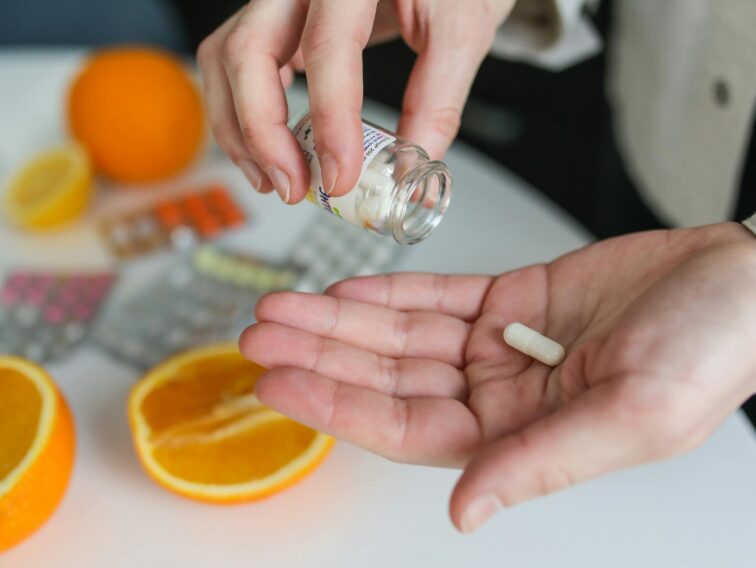Magnesium is an amazing mineral when taken correctly. Many people use magnesium to move stubborn bowels or tame anxiety.
Magnesium is one of the most supplemented minerals. We’re told our soil is deficient and that helps with stress and relaxation. It’s also important for heart health and many metabolic functions. Without enough magnesium we can develop cravings for chocolate ( a magnesium source) or get eye twitches along with many other symptoms. We need magnesium to metabolize sugar and carbs.
Most people think that supplementing magnesium is enough to ensure they have enough to meet their needs. It doesn’t. And could make things worse by lowering other minerals.
In this post I’ll teach you how to properly supplement magnesium and test magnesium levels if interested. Adequate magnesium levels can support adrenals, the gut and your stress load if done correctly.
There are two big mistakes people make with magnesium.
The first is not adding the cofactors needed for proper absorption (so no matter how much you take you are not getting enough).
The second is taking way too much and displacing other essential minerals.
There is a solution for both issues.
Two magnesium mistakes
When you over-supplement magnesium, you can lower levels of potassium and sodium, as these minerals work synergistically with magnesium.
If your adrenals are exhausted and working slowly, then lowering sodium and potassium will make them worse. Tired adrenals need more sodium and too much magnesium can lower it sodium levels.
If you have adrenal issues, adding more sea salt to your diet and changing the way you use magnesium will be much more supportive for the adrenals and energy levels.
How much of which mineral to add depends on the state of your adrenals. And your mineral level status, which can be tested through a hair tissue mineral analysis test. This test also gives clues about the state of the adrenals.
When the adrenals are working in overdrive (the fight or flight stage before they get exhausted) it’s beneficial to add magnesium to slow them down.
When your adrenals have been working in overdrive for a long time they can become exhausted and will need more sodium to help them recover.
Ask yourself if chronic stress is a happening now (need more magnesium) or was it in the past (needs more sodium to recover)?
Also, you may have a hard time absorbing magnesium if you don’t have enough sources of potassium or sodium in your diet or adequate cell levels of sodium, potassium and boron to absorb the magnesium into the cells, where it does its job.
It’s a trick balance, you need enough sodium and potassium to absorb magnesium but too much magnesium supplementation can lower these stores in your cells. There is a solution to this below.
But if you feel worse when you take magnesium, it’s because it is causing symptoms associated with low sodium or potassium.
Reasons for low magnesium
The top reasons for low magnesium in the body, other than lack in our soil, is too consumption of too much sugar and refined, simple carbs (pastas, pastries, etc.)
It takes 56 molecules of magnesium to process 1 molecule of sugar. Eating lots of sugar puts a huge demand on magnesium stores.
Mercury is a heavy metal present in our environment (main sources: dental filling and certain seafood). If you have poor detox mercury can build up in the body and displace magnesium, pushing it out of the cells.
Stress is the biggest and most common depletor of magnesium because stress demands a lot of magnesium and the body goes through its stores quickly.
Best way to get magnesium
Topical magnesium (sprays, oils, lotions) and epsom salt or magnesium flake baths or foot soaks are two ways to get more magnesium in the body without disturbing sodium and potassium balance.
Even when there is a demand for magnesium, taking it orally can cause side effects that don’t occur with topical application. This is a way to absorb magnesium better because you don’t need to metabolize it or other cofactors to absorb it.
The safest way to start supplementing magnesium is through the skin because it allows sodium and potassium levels to rebuild. And starting slowly is alway wise. If you don’t have a bath tub, you can put some epsom salt or magnesium flake in a basin and soak your feet. This can have a big benefit.
If the body has a big magnesium demand, eventually and slowly introducing oral magnesium slowly can work, along with potassium and sodium supplementation. This will give the body a chance to balance it’s minerals without one displacing the other.
When someone is truly deficient in magnesium, they need 5 times their body weight in milligrams of magnesium, but it needs to be done slowly and carefully, with attention to getting other minerals in the diet.
How do you know your magnesium status?
The Hair Tissue Mineral Analysis test (HTMA) is the test that measures the mineral balance in your body over the last 3 months. You need 1 inch of hair cut from the scalp that has not been chemically treated.
Not only will it show mineral levels in the body, but also heavy metal load.
The HTMA test gives us insight about the state of the thyroid, adrenals, nervous system, immune system, gut health, detox capacity, blood sugar regulation and metabolic health.
I am currently offering the test and interpretation at an introductory price of $300.
Action steps
If you have not taken an HTMA test and don’t plan to do so, you can experiment with switch from oral magnesium to topical forms and get more sodium (see salt, celery) and potassium rich foods (bananas, prunes, dried apricots, raisins, fish, beets, lentils, potatoes, and coconut water) in your diet.
Then slowly, introduce oral magnesium and see how you feel. Is it absorbing better and having more benefit in your body.
Lowering your sugar consumption and stress relieving activities can also help with magnesium stores.
Different types of magnesium
Different magnesium supplement absorb differently in the body.
Magnesium citrate and oxide help move the bowels but don’t absorb well into the cells.
More bioavailable forms of magnesium, that don’t cause loose bowels, are magnesium orotate, magnesium chloride and magnesium lactate.
While it may seem a bit complicated, understanding how to properly supplement minerals can be a game changer. It can improve energy, mood and some symptoms.
Each body has individual needs and testing is the best way to personalize your protocol and keep minerals, nutrients and toxins in balance.
I’ll be writing more about the benefits of the HTMA as this is a new concept to most people, but also the only test I used 20 years ago to rid myself of IBS symptoms, inflammation and to heal candida, my adrenals, hormones and immune system.


